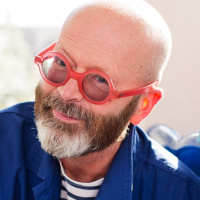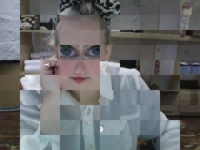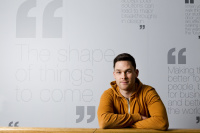What areas do you think smart fabrics could be used in?
An EU-backed team is researching the potential of ‘smart fabrics’. What areas do you think they could be used in?

Undoubtedly a fascinating area, smart fabrics brings us one step closer to the eventual disappearance of physical technology, all together. When its the experience that matters, mediating it through clunky physical objects can distance and distract. I believe the best interface is almost not there, so these developments are exciting and welcome. Couple that with the ability to actually print out these materials, and it gets very exciting for the creator, the mixer-upper, even the technology-breaker. As with all of these new technologies, its often not the demo work that has longevity (though of course it is vital to promote and inspire the new thing) – it will be the material in the hands of others who use and ubuse it, make it do things it shouldn’t do, and push it in to really interesting places.
Andrew Shoben, lead artist, Greyworld

I shudder to think of another attempt at promoting vacuous interactivity cloaked in Hadid swoopiness…but then, thinking of reinforcing our primitive sensual relationships with fabrics and not our obsession with making information decorative, I dream of a child’s comforter that reveals a womb-like soundscape when sucked, a pillow that breathes the body smell of a lost lover, a scarf that wraps you up and whispers stories of summer warmth. Here’s hoping…
Tim Molloy, consultant

As the size of a meaningful computation is expected to approach zero by 2020, I think it will become increasingly difficult to find materials and objects that don’t have ‘smart’ properties. There are lots of opportunities for smart materials to improve the way we live – for example in 2011 Helen Storey and Tony Ryan produced some beautiful catalytic textiles that purify the air. Eventually smart technologies and sensors will be embedded within almost everything. Super-personalised products, services and adverts that respond to our individual surroundings and physical metrics will become commonplace. Whether that’s good or bad remains to be seen.
Clair Neal, designer, Kin Design

One area that immediately springs to mind is healthcare. The idea of ‘Quantified Life’ is a growing trend that could change the way we think about our health management. Imagine a material that could be worn by an epilepsy sufferer that could detect when an attack was coming, and as such warn the wearer. It could even deploy a formulation to prevent the attack, making it predictive rather than reactive. These materials and systems are already possible and I am excited to see what happens next.
Laurence Willmott, senior designer, Seymourpowell
-
Post a comment




